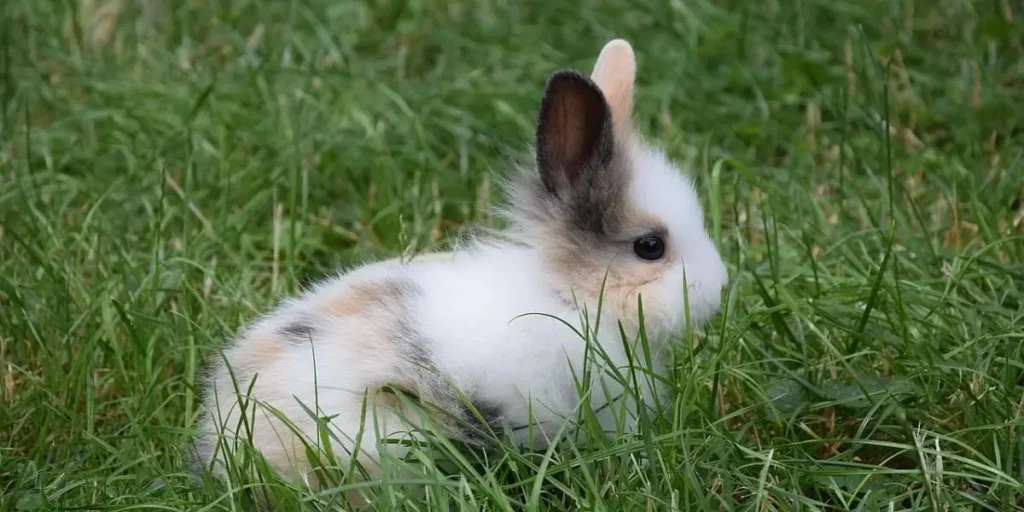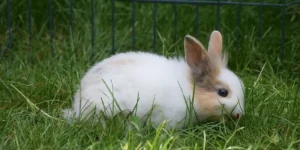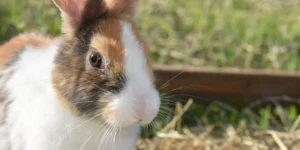Table of contents
These small pets require dedicated daily care. The sections below summarize essential choices and costs to help you plan responsibly before adoption.
Key Points
- Multiple dwarf rabbit breeds exist, with purchase price varying by breed and source;
- You can adopt from a shelter or buy from a breeder, private owner, or pet store;
- Monthly upkeep includes food, veterinary care, habitat/accessories, and optional insurance.
Which Dwarf Rabbit Breeds Exist?
Colored Dwarf Rabbit
A popular choice for families and first-time owners. This small, compact rabbit has short, upright ears and comes in many coat colors and patterns.
Its short, smooth coat requires little grooming. Curious and energetic, yet sometimes independent, it becomes an affectionate and playful companion with early socialization.
Providing enrichment like toys and hideouts keeps it happy, while a balanced diet helps prevent dental and digestive problems.
Dwarf Lop (Mini Lop)
Known for its long, drooping ears and dense, silky coat that comes in many colors. This calm and affectionate rabbit is very sociable and loves being petted.
It needs plenty of space and stimulation – tunnels and chew toys are great choices. Brush regularly during shedding periods, and check its ears often for infections due to their shape. A balanced diet and routine veterinary care help keep it healthy and happy.
Dwarf Angora
This breed has a long, silky coat that needs careful daily grooming to prevent mats and limit hair ingestion. Gentle and often reserved, it forms close bonds with patient handling.
Keep its living area clean and spacious so the coat doesn’t get tangled with hay or litter. A high-fiber diet is essential to maintain healthy digestion.
Dwarf Rex
This rabbit has an extremely short, dense, velvety coat caused by a unique hair-shaft mutation and comes in a wide variety of colors and patterns. Gentle, curious, and intelligent, it adapts well to indoor life and can even learn simple cues with positive reinforcement.
Its coat is low-maintenance, but the breed is sensitive to drafts and temperature changes. A fiber-rich diet and plenty of chew toys help prevent dental problems.
Hermine (Polish) Dwarf
This rabbit has a pure white coat with striking red or blue eyes and short, dense, silky fur. Lively and sometimes a bit headstrong, it benefits from early socialization.
It needs plenty of space to exercise and enjoys toys, tunnels, and safe resting areas. A well-monitored diet helps prevent digestive problems and supports dental health. Intelligent and alert, it can learn simple behaviors with consistent, positive training.
Lionhead Dwarf
Recognized for its distinctive mane of long hair around the head, with a shorter coat over the rest of the body. Affectionate and playful once bonded, though it may be shy at first – patience helps build trust.
This curious rabbit loves to explore and play with interactive toys. Regular brushing around the head and neck prevents tangles, while its strong chewing instinct means it should always have access to hay, safe chew toys, and plenty of indoor space to move around.
What Is the Adult Weight and Size of a Dwarf Rabbit?
Typical adult weight: 800 g to 2 kg (1.8–4.4 lb), depending on breed:
- Smaller types (Colored Dwarf, Hermine): ~800 g to 1.3 kg (1.8–2.9 lb);
- Larger types (Dwarf Lop, Lionhead): ~1.5 to 2 kg (3.3–4.4 lb);
- Average body length: ~20–30 cm (7.9–11.8 in). Dwarf Lops may appear larger due to a stockier build and lop ears.
What Is the Average Price to Buy a Dwarf Rabbit?
Prices vary by breed, breeder, animal quality (pet vs. show), and place of purchase.
| Breed | Price ($) | Details |
| Colored Dwarf | 20–50 | Common and often least expensive; higher with selected lines from breeders. |
| Dwarf Lop (Mini Lop) | 40–80 | Sought‑after for calm nature and lop ears; higher at specialized breeders. |
| Dwarf Angora | 50–100 | Rarer with higher grooming needs; quality lines/socialization increase price. |
| Dwarf Rex | 50–90 | Velvety coat; less common; specialized breeding may reach 80–90 €. |
| Hermine (Polish) Dwarf | 30–70 | White coat with red/blue eyes; affordable; higher for selected lines. |
| Lionhead Dwarf | 40–90 | Iconic mane; prices start ~40 € in stores and rise at specialized breeders. |
Adopting from a shelter usually costs around $20–$40 and often includes spaying or neutering.
Where to Get a Dwarf Rabbit?
Adoption from a Breeder
Health-focused, well-socialized animals from carefully selected lines, with personalized advice on care and lifestyle. Costs are usually higher, and travel may be required. Always evaluate the breeder’s housing conditions, handling, genetic practices, and overall animal health standards.
From a Private Owner
Some owners do a good job socializing young rabbits, but their background isn’t always guaranteed. Risks include inbreeding or accidental litters. Always check the living conditions, meet the parents if possible, and review the rabbit’s diet and health history before adopting.
Pet Store Purchase
Convenient access at lower prices, but early socialization and source may be uncertain. Check the animal’s condition, enclosure cleanliness, and access to hay and water before buying.
What Monthly Budget Is Needed to Care for a Dwarf Rabbit?
Plan to spend about $30–$60 per month, with occasional larger costs for veterinary care and equipment.
Food
- High-quality hay: about $5–$15 per month;
- Premium pellets in small portions: around $5–$10 per month;
- Fresh vegetables: roughly $10–$20 per month, depending on the season.
Care and Hygiene
Enclosure, water bottle or bowl, and absorbent litter (hemp or recycled paper): about $5–$15 per month, plus occasional costs for enrichment items like toys, mats, or a playpen.
Vaccines and Veterinary Care
- Annual exam and vaccines (myxomatosis and rabbit hemorrhagic disease/VHD): about $50–$80;
- Spay or neuter (one-time cost): around $100–$200;
- Sick-visit consultations typically run $30–$50, not including treatments. It’s wise to set aside about $10–$20 per month for unexpected veterinary expenses.
Insurance
Pet health insurance for rabbits can cover part of the costs for accidents, illnesses, and surgeries, and sometimes includes preventive care. Compare coverage options, limits, and premiums to find a plan that fits your needs.
Life Expectancy: How Long Does a Dwarf Rabbit Live?
The average lifespan is 8–12 years, and with excellent care, some rabbits live beyond 14 years. When planning to adopt, consider both the initial purchase and ongoing costs such as hygiene, veterinary care, and nutrition.


